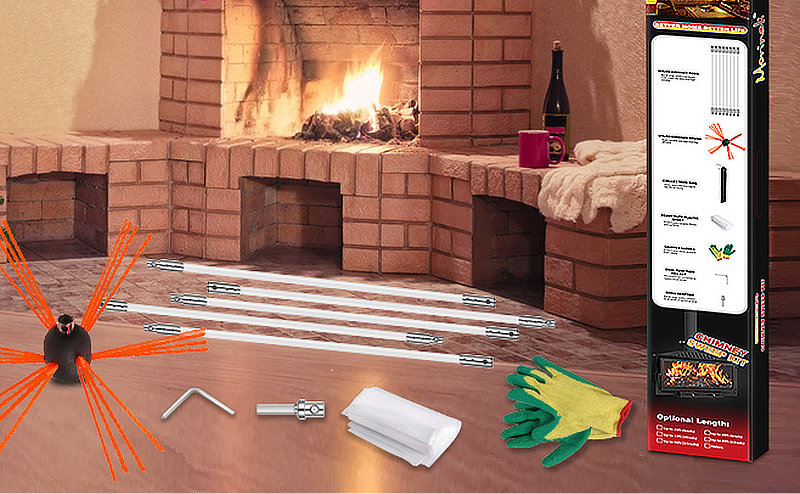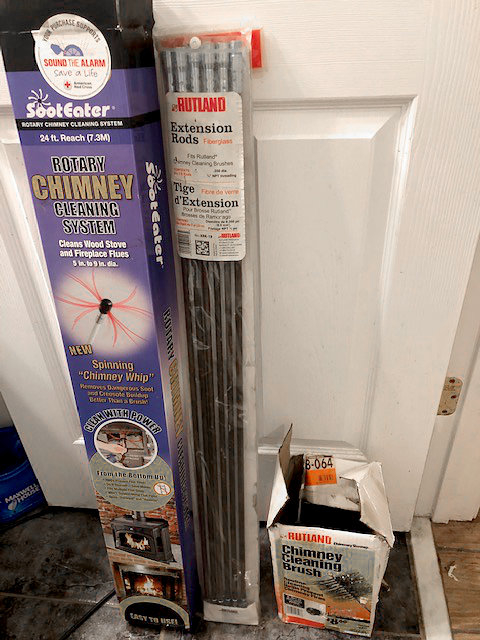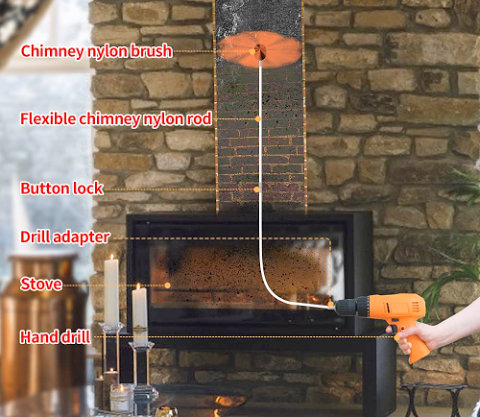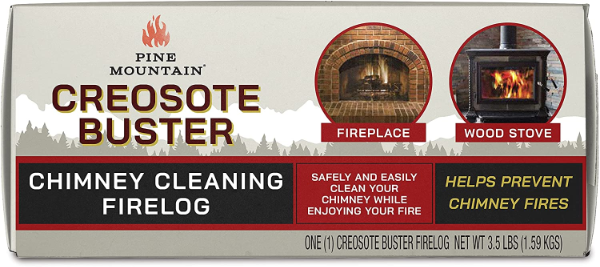Chimney Sweeping – Clean Your Own Chimney

A clean chimney. It’s a big Fire Risk Reduction.
Guest article by Bogan
“An ounce of prevention beats a pound of cure” comes to mind when thinking about cleaning your chimney.
What is at stake? No matter what kind of wood you burn, or how well you cure it before burning, an unswept chimney WILL accumulate at least some creosote buildup and has a risk of catching fire and burning your house down. The “cure” in a worst-case scenario? A new house. No thanks!
This is a serious matter.
Balance that against the cost of having it serviced professionally: A couple hundred bucks at most. And it should be done at least annually if not more often. Many would consider the safety tradeoff of the dollars well spent.
Clean Your Own Chimney
However, this article is not about how to hire a trained chimney sweep to clean the chimney, it’s about how to handle the situation yourself, how to clean a chimney if or when a professional is not available.
In a grid down situation, DIY is the only way in which the job will get done. And it has to get done, if you are burning wood for warmth or for cooking unless you just enjoy living dangerously.
This article will address a few basic considerations for cleaning a chimney yourself, although there are many additional considerations too.
Cleaning a Chimney “Top down” or “Bottom up”?
The two basic positions to cleaning a chimney require you to either be on the roof and cleaning the chimney from the top downward “top down”. Or at the hearth (or stove) level and cleaning upward toward the peak of the chimney from there: i.e. “bottom up”.
I am not comfortable going onto the roof so use the bottom up approach, YMMV.
Manual or Electric (Drill attached) Chimney Brush
The basic options are whether your chimney “brush” will be hand operated (no mechanical assistance) or be attached to a drill.
The simplest of these two is hand operated. It involves selecting the right size brush, and then screwing it into a series of extension rods depending on the length of your chimney. You insert the brush into the chimney and work it vigorously up and down as you go, adding extension rod sections as you work your way along the length of the chimney.
I use something like this:
Rutland Fiberglass Brush Rod Kit
(view on amzn)

A little higher tech is the drill-mounted option: This reminds me of a weed-whacker, only for your chimney.
Basically it is an end piece from which protrudes … what looks like trimmer string!
As with the hand operated system, you attach the weed-wacker style head to sections of flexible fiberglass rod, and then to your drill (I use a cordless drill but a plug in type drill might work even better because of the torque). Then enthusiastically wave it around and up and down as you work the spinning head along the length of the chimney.
Chimney Sweep Kit for Drill
(amzn)

As to which one to select. I must confess to preferring the drill-mounted one, but use both.
Mostly I use the drill mounted one, 2-3 times a year – it only takes a few minutes. Remember this: in a grid-down situation electricity might not be available, leaving only one real option – the manual one.
Soooooo….it’s worth it to me to have both. The money spent on these….combined….is less than I would pay for a single event professional service anyway.
What Brush Size For Chimney Sweep?
For a manual system you need to size your brush to the chimney flue. Standard sizes are 4”, 6” and 8”.
Rutland 4-Inch Poly Cleaning Brush
(amzn)
Rutland 6-Inch Poly Cleaning Brush
Rutland 8-Inch Poly Cleaning Brush
Options also include square and round. Get the right shape and size: Too big and it won’t fit; too small and its useless. If you are a gun owner you know that trying to clean your .30-06 bore with a .22 brush is not going to accomplish much.
So take the time now….while you can… to figure out the right size and get it in hand.
For the drill mounted system, one size fits all.
What other equipment might I need to clean my own chimney?
You’ll want to clean your hearth before and after cleaning your chimney so I recommend the following:
- Fireplace suitable shovel for the ashes
- Hand broom
- Metal bucket (I use a made in USA Pail)
- Drop cloths for around the fireplace and to cover nearby furniture. (I use inexpensive small plastic tarps, as cotton drop cloths retain the ash and soot when I’m trying to shake it off. The ash and soot just seem to flow off the plastic tarps into the pail I use)
- Vanity mirror – 4-6” size. To peer up the chimney as needed without putting a crick in your neck! (I concede to using a ladies makeup mirror from the dollar store)
Creosote Buster
(amzn)

HOW DO YOU PLAN TO HANDLE YOUR CHIMNEY WHEN THE SHTF?
[ Read: Fireplace Reflectors Improve Wood Burning Heat Efficiency ]
